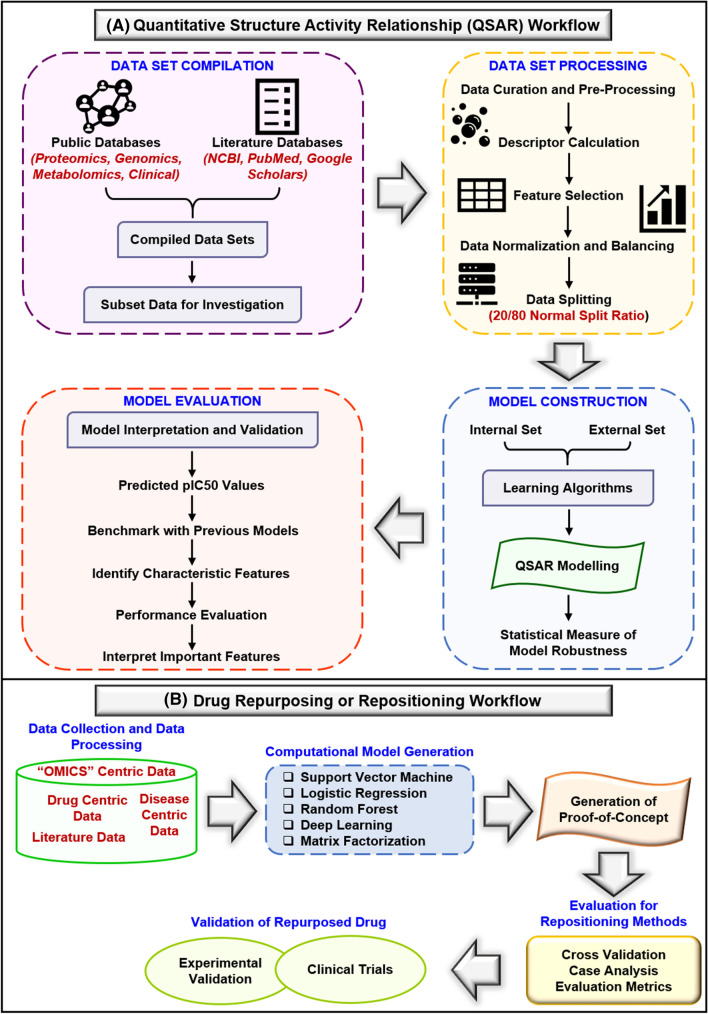Fig. 5.
a Quantitative structure–activity relationship workflow: the initial step comprises of data set compilation, where data from public database and literature database are accumulated and compiled, which further divided into different subsets for investigation. Afterward, data set processing is performed, where data pre-processing and curation followed by calculation of molecular descriptors are done. After description calculation, data set processing normalization of data and splitting of data into different sets are performed. In the third step, model construction is performed, where data sets such as internal data and external data are accumulated, and learning algorithms are applied for QSAR modeling. Finally, the statistical calculation is done to measure the model robustness. The final step in the quantitative-structure activity relationship is model evaluation, where the model is evaluated by comparison from previous benchmark models, identifying characteristics features, performance evaluation, and interpretation of essential features. b Drug repurposing or repositioning workflow: the first step is collection of data and data pre-processing followed by computational model generation. The models generated are support vector machines, logistic regression, random forest, deep learning, and matrix factorization. Afterward, the generation of proof-of-concept from a literature
source is performed. Later on, evaluation of repositioning models through cross-validation, case analysis, and evaluation metrics is performed. Finally, validation of repurposed drugs is carried out through clinical trials, in vitro studies, and in vivo studies

